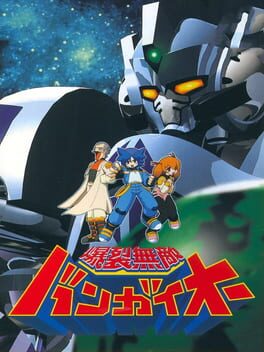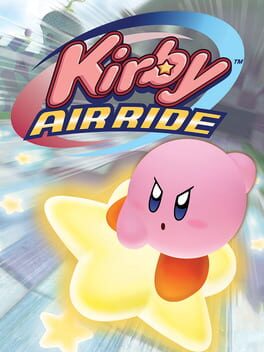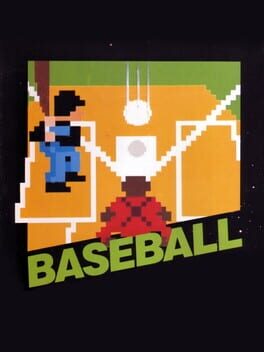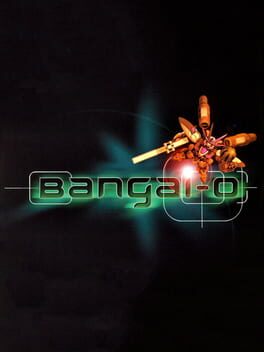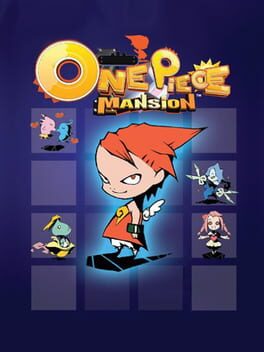mrock
Bio
:)
:)
Badges

Best Friends
Become mutual friends with at least 3 others

Noticed
Gained 3+ followers

Roadtrip
Voted for at least 3 features on the roadmap

Gamer
Played 250+ games

N00b
Played 100+ games
Favorite Games
476
Total Games Played
000
Played in 2024
066
Games Backloggd
Recently Reviewed See More
Baseball, released for the Famicom and NES, is perfect. Of course I don’t mean that it’s a perfectly realistic simulation of a real life ballgame, or that it’s impossible for any video game to be better than this one. Rather, it’s an accurate simulation of how some sort of omniscient being (that’s you, should you play this) might control a theoretically perfect game of baseball using a Famicom or NES controller.
Within the limited framework of a 4-way D-pad and 2 face buttons, you couldn’t have a greater level of control of the players’ actions without diminishing the genius intuition of the control scheme. When fielding or commanding the runners, the D-pad’s 4 Ds correspond to each of the four bases (with the exception of down corresponding to everyone when choosing runners, which elegantly takes advantage of the absence of a runner on home plate). If I didn’t know any better, I’d argue that the D-pad was designed with this very sport in mind. If I DID know any better, I’d argue that the sport ITSELF was designed with the foresight that an (at the time, theoretical) omniscient puppet master might only have a 4-directional input device at their disposal with which to puppeteer their possessed players. Even the use of the 2 buttons while at bat is similarly suited to the gameplay. The A button, labelled with the alphabet’s introductory character, corresponds to the primary actions of both teams during the batting: swinging the bat, and throwing a pitch. Meanwhile, the B button is used for the secondary actions: advancing a runner, and making the pitcher throw to one of the bases to get that runner out.
To elaborate on what I meant earlier by a “theoretically perfect game of baseball,” the gameplay relies upon the assumption that, whenever you’re not controlling them, every player is performing as perfectly as the laws of physics will allow. There are no errors (a baseball term which refers to a misplay), which relieves you of the hassle of manually controlling actions like catching and fielding. There is no such thing as HPB (hit by pitch, another baseball term), which provides the amusing assumption that the batter is actually Matrix-dodging the ball when it looks like they should be getting hit. There are also no freak accidents such as adverse weather or injuries. Essentially, the game of baseball you play here is always one in which the only mistakes made by its players come from a pitch being thrown too far left or right, or from the batter missing a swing.
Even the aesthetic elements could be described as perfect. Every character and object does its job of unmistakably resembling that which it represents and animating in a way which properly conveys its movement. The only possible exception is the titular ball itself, which I’d say technically still qualifies. It may not contain its signature red threads, but it’s quite rare that you’ll be able to make those out with the naked eye while it’s being used in a real life ballgame anyway.
I’d like to end the review here, but unfortunately it’s time to admit that this game does have a few of what you could consider “flaws.” There’s no rule in place for a Delay of Game, meaning that the pitcher can just stand there eyeing the batter for all eternity. More amusingly, this also means that the basemen and catcher will throw the ball to each other for as long as you’re able to hit the A button while alternating directions on the D-pad. There’s also the way that the crowd flashes rainbow colors every time someone hits a home run. Objectively, this clearly breaks the immersion of being an authentic baseball game, even if subjectively I’d call it an improvement since I would prefer if people in real life flashed bright colors when they witnessed something really cool.
So it may not be perfect, but I’ll salvage my thesis statement with this conclusion: the rating you give to Baseball is more of an assessment of baseball (the sport) than it is for Baseball (the video game). This game is such a blunt adaptation of a sport into a video game that the amount of entertainment you receive is at least the bare minimum enjoyment you possibly could get out of using a Famicom or NES controller to perform divine intervention on a baseball game with theoretically perfect players. As for me, I think baseball’s pretty cool, and that makes Baseball pretty cool too (though I am still riding off the hype of pulling off a grand slam against the Yomiuri Giants while controlling the Hanshin Tigers).
Within the limited framework of a 4-way D-pad and 2 face buttons, you couldn’t have a greater level of control of the players’ actions without diminishing the genius intuition of the control scheme. When fielding or commanding the runners, the D-pad’s 4 Ds correspond to each of the four bases (with the exception of down corresponding to everyone when choosing runners, which elegantly takes advantage of the absence of a runner on home plate). If I didn’t know any better, I’d argue that the D-pad was designed with this very sport in mind. If I DID know any better, I’d argue that the sport ITSELF was designed with the foresight that an (at the time, theoretical) omniscient puppet master might only have a 4-directional input device at their disposal with which to puppeteer their possessed players. Even the use of the 2 buttons while at bat is similarly suited to the gameplay. The A button, labelled with the alphabet’s introductory character, corresponds to the primary actions of both teams during the batting: swinging the bat, and throwing a pitch. Meanwhile, the B button is used for the secondary actions: advancing a runner, and making the pitcher throw to one of the bases to get that runner out.
To elaborate on what I meant earlier by a “theoretically perfect game of baseball,” the gameplay relies upon the assumption that, whenever you’re not controlling them, every player is performing as perfectly as the laws of physics will allow. There are no errors (a baseball term which refers to a misplay), which relieves you of the hassle of manually controlling actions like catching and fielding. There is no such thing as HPB (hit by pitch, another baseball term), which provides the amusing assumption that the batter is actually Matrix-dodging the ball when it looks like they should be getting hit. There are also no freak accidents such as adverse weather or injuries. Essentially, the game of baseball you play here is always one in which the only mistakes made by its players come from a pitch being thrown too far left or right, or from the batter missing a swing.
Even the aesthetic elements could be described as perfect. Every character and object does its job of unmistakably resembling that which it represents and animating in a way which properly conveys its movement. The only possible exception is the titular ball itself, which I’d say technically still qualifies. It may not contain its signature red threads, but it’s quite rare that you’ll be able to make those out with the naked eye while it’s being used in a real life ballgame anyway.
I’d like to end the review here, but unfortunately it’s time to admit that this game does have a few of what you could consider “flaws.” There’s no rule in place for a Delay of Game, meaning that the pitcher can just stand there eyeing the batter for all eternity. More amusingly, this also means that the basemen and catcher will throw the ball to each other for as long as you’re able to hit the A button while alternating directions on the D-pad. There’s also the way that the crowd flashes rainbow colors every time someone hits a home run. Objectively, this clearly breaks the immersion of being an authentic baseball game, even if subjectively I’d call it an improvement since I would prefer if people in real life flashed bright colors when they witnessed something really cool.
So it may not be perfect, but I’ll salvage my thesis statement with this conclusion: the rating you give to Baseball is more of an assessment of baseball (the sport) than it is for Baseball (the video game). This game is such a blunt adaptation of a sport into a video game that the amount of entertainment you receive is at least the bare minimum enjoyment you possibly could get out of using a Famicom or NES controller to perform divine intervention on a baseball game with theoretically perfect players. As for me, I think baseball’s pretty cool, and that makes Baseball pretty cool too (though I am still riding off the hype of pulling off a grand slam against the Yomiuri Giants while controlling the Hanshin Tigers).
I’ve already reviewed the N64 version, so here I’ll just review the changes made to the Dreamcast version.
Most importantly, the special attack has some slight alterations, not for the better or worse, but which drastically change the way it can be used. The special meter no longer fills by collecting fruit, which are now only here for points, but rather by hitting enemies. Now instead of having to focus on scouring the levels for fruit, you’re actually encouraged to make a beeline to the boss while occasionally blasting a few specials here and there along the way. What makes the special even easier to use is that it no longer needs to be charged, as its power is dependent solely on how close enemy projectiles are. Unfortunately though, the shop is absent here, possibly because specials can be pulled off so much more easily and frequently now.
The CD format comes with improved graphics and music, but at the unfortunate cost of reducing Bangai-O’s signature slowdown. Call me crazy all you want, but the slowdown is one of the most endearing parts of the experience. There’s nothing like seeing just how incapable the hardware is at handling this game.
There’s also the controls, which are technically the same, with the caveat that you’d have to hold half the Dreamcast controller with both hands to be able to use the D-Pad to move and the stick to shoot. But like I said with the N64 version, you’re probably gonna need to emulate this to play it at all nowadays, so you can fix that issue pretty easily.
Most importantly, the special attack has some slight alterations, not for the better or worse, but which drastically change the way it can be used. The special meter no longer fills by collecting fruit, which are now only here for points, but rather by hitting enemies. Now instead of having to focus on scouring the levels for fruit, you’re actually encouraged to make a beeline to the boss while occasionally blasting a few specials here and there along the way. What makes the special even easier to use is that it no longer needs to be charged, as its power is dependent solely on how close enemy projectiles are. Unfortunately though, the shop is absent here, possibly because specials can be pulled off so much more easily and frequently now.
The CD format comes with improved graphics and music, but at the unfortunate cost of reducing Bangai-O’s signature slowdown. Call me crazy all you want, but the slowdown is one of the most endearing parts of the experience. There’s nothing like seeing just how incapable the hardware is at handling this game.
There’s also the controls, which are technically the same, with the caveat that you’d have to hold half the Dreamcast controller with both hands to be able to use the D-Pad to move and the stick to shoot. But like I said with the N64 version, you’re probably gonna need to emulate this to play it at all nowadays, so you can fix that issue pretty easily.
A stress-inducing game about stressing people out. The fast pace with which you’re expected to perform your landlord-ly duties makes for an intense tug of war between optimising room layouts and dealing with a nonstop influx of Syndicate 5 members moving in. This gameplay loop is obviously a natural fit for Endless Mode, which challenges the player to see how long they can “manage,” but Story Mode is unusual by comparison. The entire campaign is so short and easy that it could be reasonably described as a tutorial, and if anything the game might feel more complete without it. Nevertheless, the Endless Mode’s arcade-style replayability is definitely enough to keep me coming back for more managerial mayhem.


